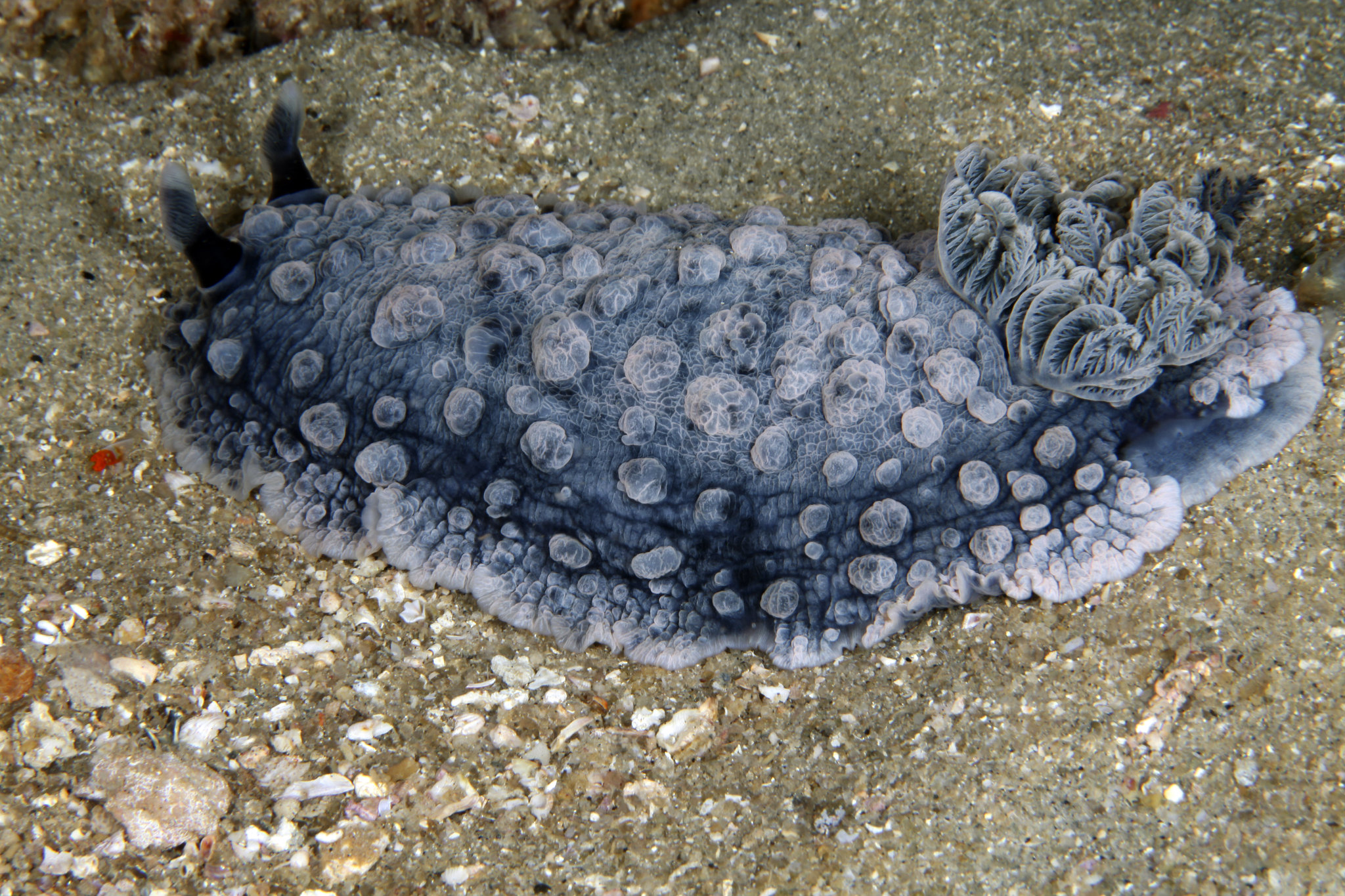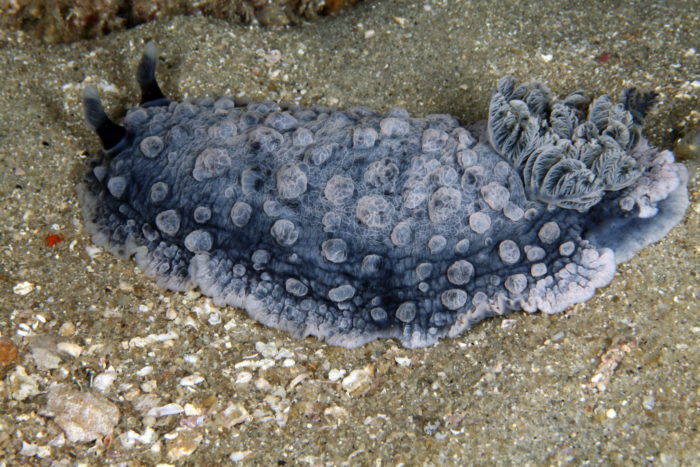
Sea Wonder: Warty Sea Slug
While they might not be the cutest or cuddliest creatures in the sea, the warty sea slug (Dendrodoris warta) is a mysterious invertebrate that plays an important role in the ecosystems in which it lives. Find out more about this creepy, crawly, and slimy wonder below!
Appearance
As part of the group nudibranchia, a classification of more than 2,000 species of marine mollusks that lack shells and resemble slugs that we might see on land. At the front of their head are two tentacles, and toward the back of their bodies are two sensory tentacles called rhinophores; toward the front of their bodies are small gills used for extracting oxygen from the water around them. Their coloration of their gelatinous bodies ranges from brown to dark blue, with variations between. What look like warts all over their bodies are actually tubercles, blister-like protrusions used for camouflage and deterring predators. They have been observed at lengths of one quarter of an inch to 1.5 inches long. Since their bodies are primarily composed of water, they turn into shapeless, slimy lumps if removed from their environment.
Diet and Habitat
The warty sea slug is carnivorous, feeding on animals like hydroids and sponges. Unlike other marine invertebrates that eat whatever they can catch, nudibranchs like the warty sea slug only eat one or two kinds of food. Not much is known about their predators, but it is likely that crustaceans, small- and medium-sized fish, and mollusks may rely on larvae and adult warty sea slugs for some or all of their diet.
Warty sea slugs have been observed in subtropical areas of the Atlantic Ocean and Gulf of Mexico but are most commonly seen in Venezuela, off the east and west coasts of Florida, and up to Georgia, meaning they live in Gray’s Reef National Marine Sanctuary and possibly in Flower Garden Banks National Marine Sanctuary. Very rarely will these animals live in waters deeper than 90 feet. They have a limited home range, but similar bumpy looking sea slugs can be found in other parts of the world like New Zealand.
Life History
Warty sea slugs begin their lives as coiled ribbons of orange eggs attached to rocks that hatch into larvae, which are at the mercy of ocean currents until they settle onto the seafloor. Sea slugs possess both male and female sex organs and can mate with any other individual of their species they come across. Eggs can hatch in as few as five days and as long as 50 days, and larvae shed the shells they develop inside of their eggs before hatching. Once hatched, they continue growing and progressing through the life cycle until they reach adulthood. Scientists are not sure of the average or maximum life cycle of a warty sea slug, or when they reach maturity.
These sea slugs live simple, independent lives but may be found near other individuals due to availability of food.
Threats and Conservation
Populations of warty sea slugs seem to be stable and healthy but may be thrown out of balance by human activities such as dredging and other physical damage to the seafloor, warming and acidifying ocean waters caused by increased atmospheric carbon, and extraction of prey animals such as sponges for industrial purposes.

